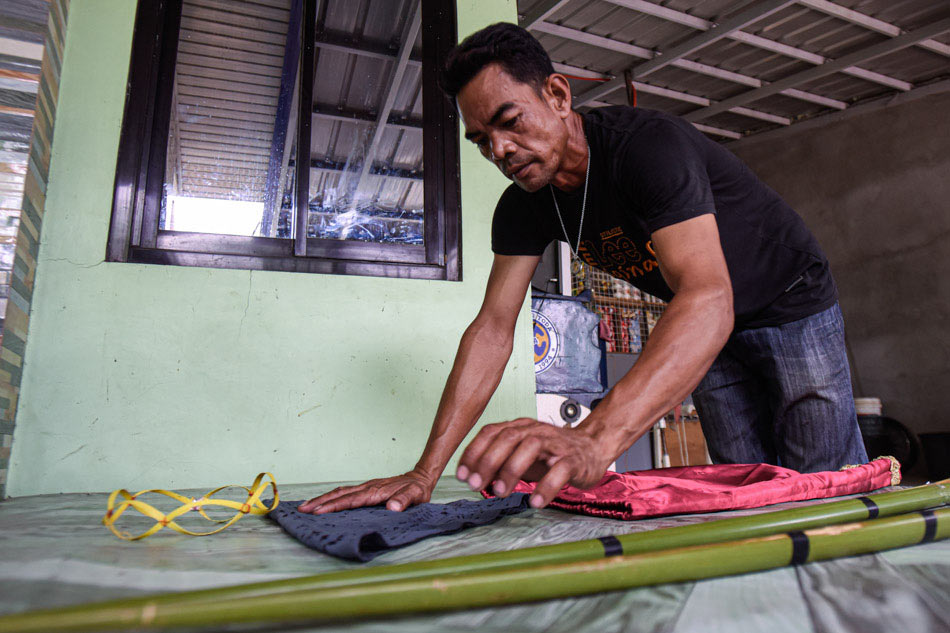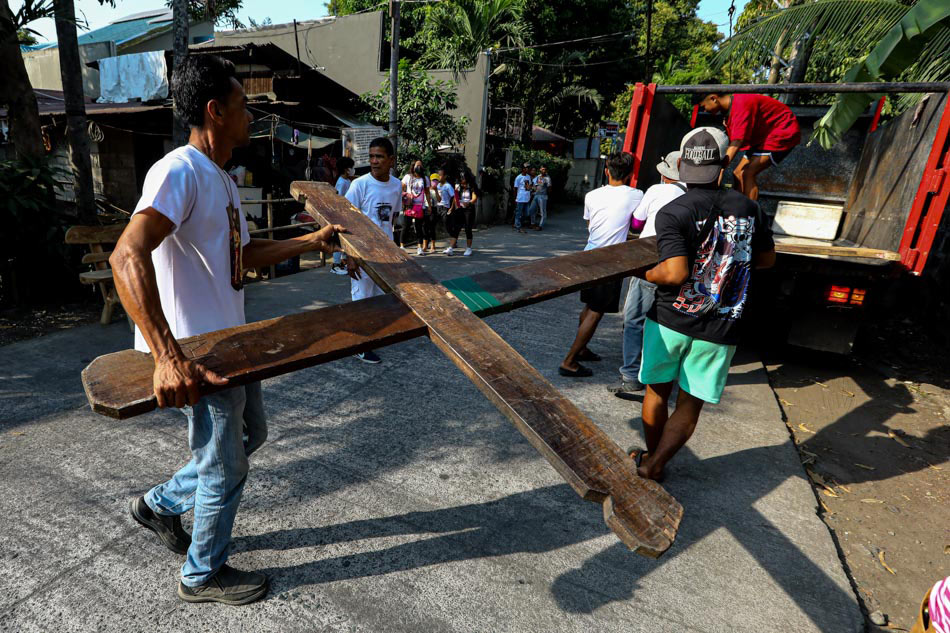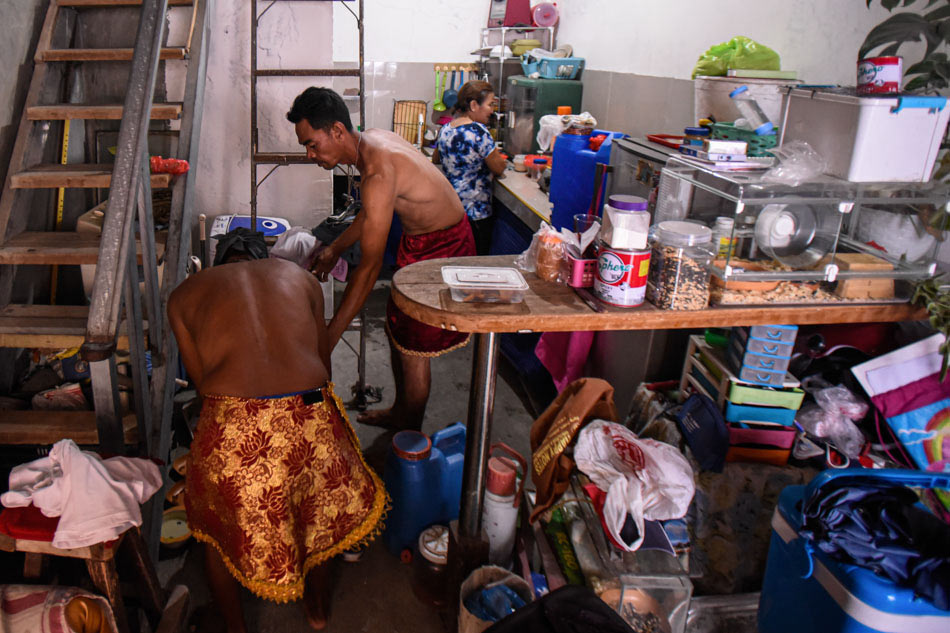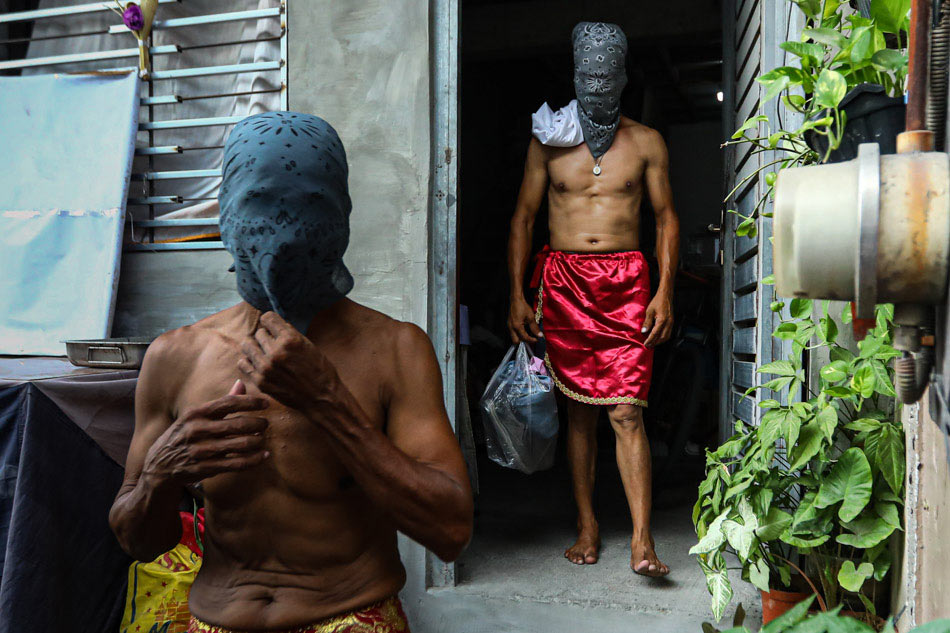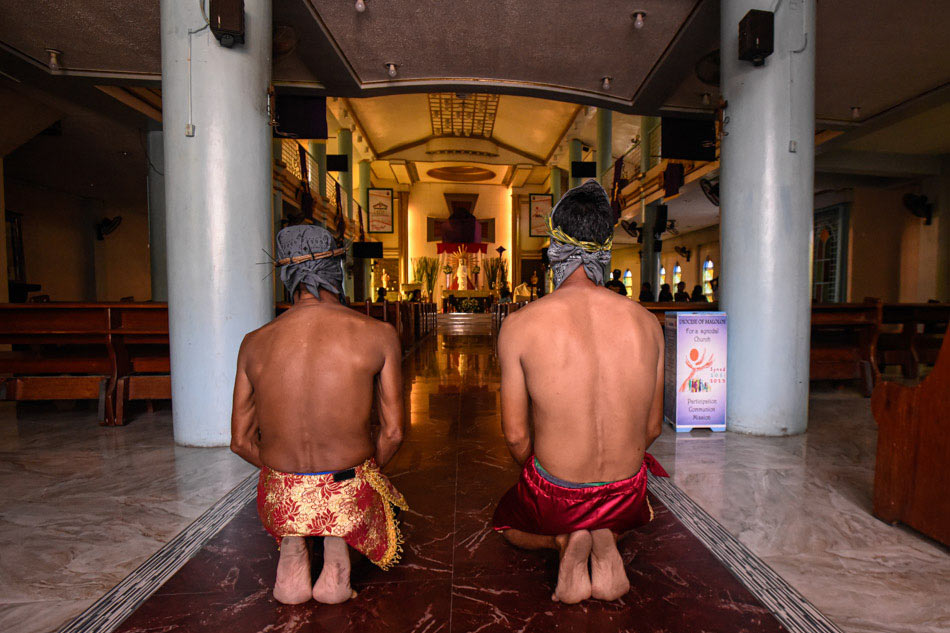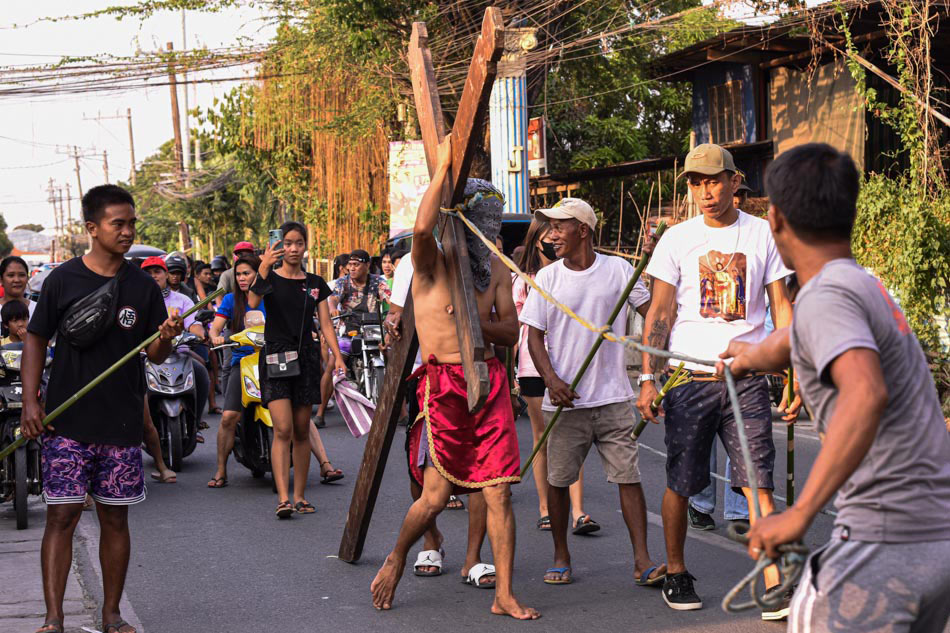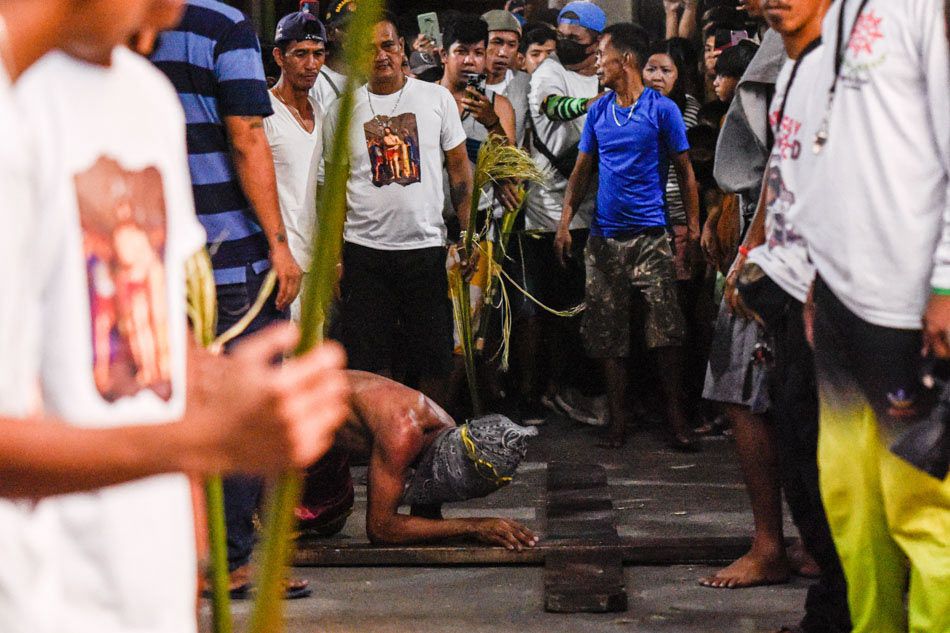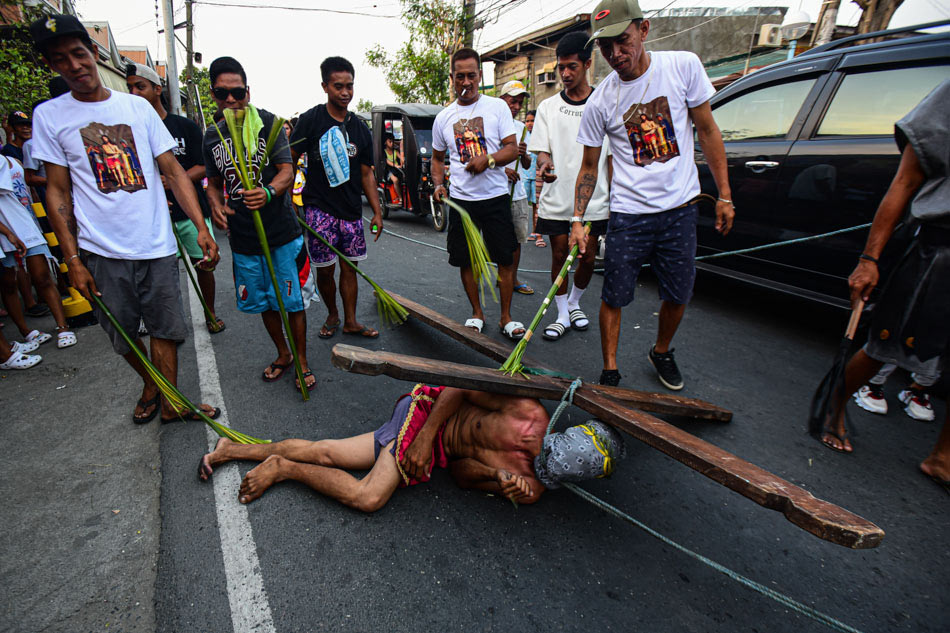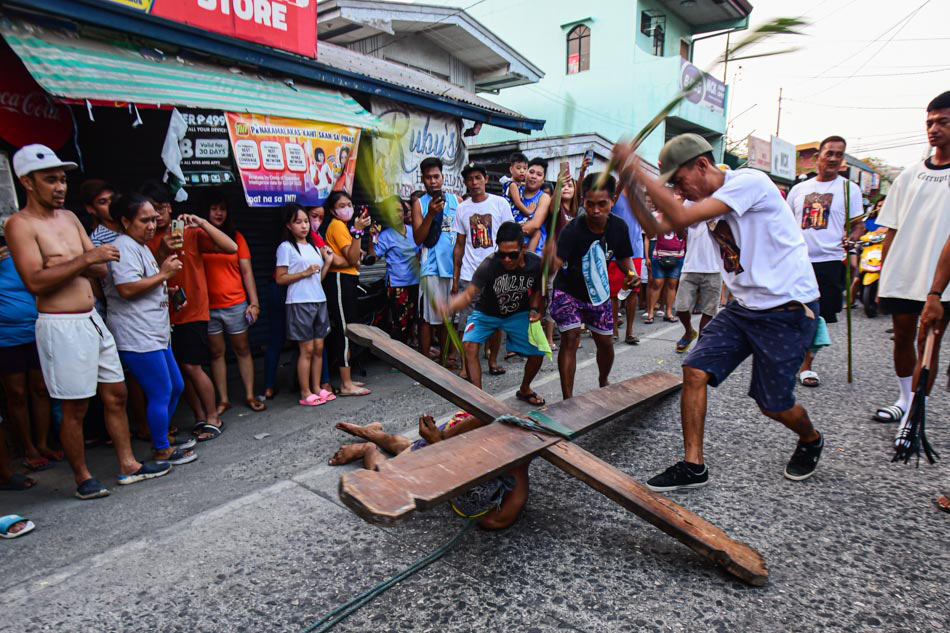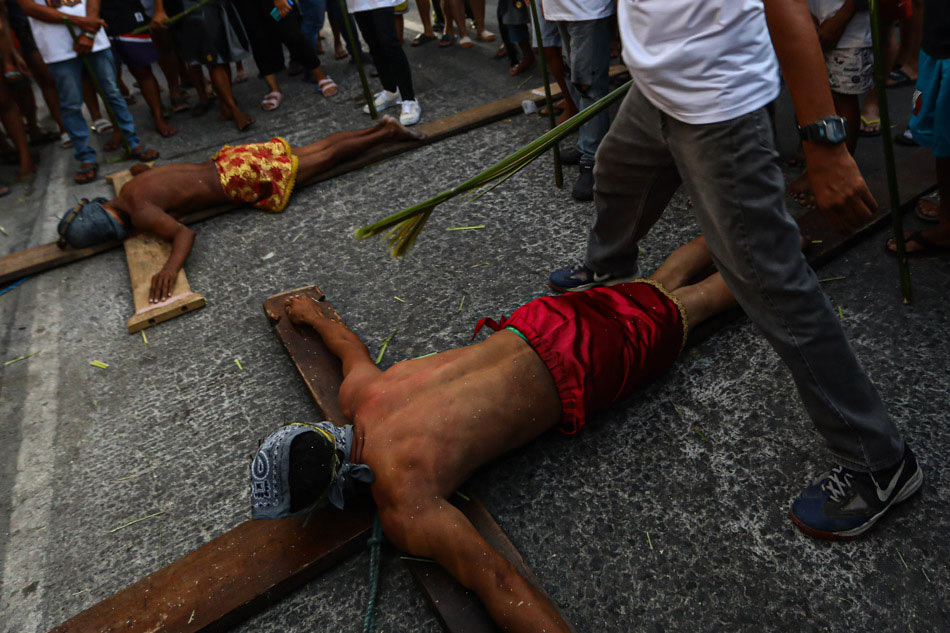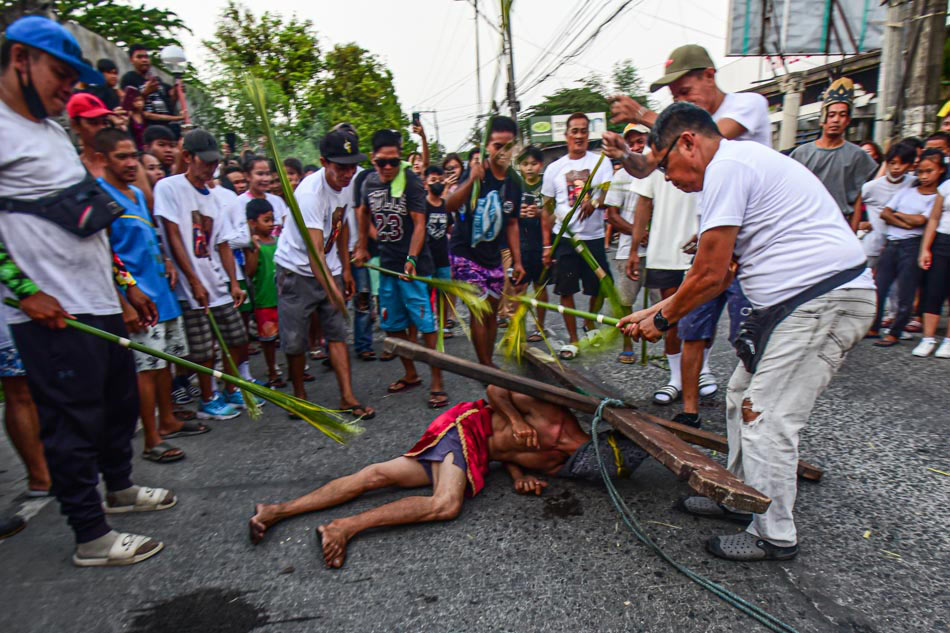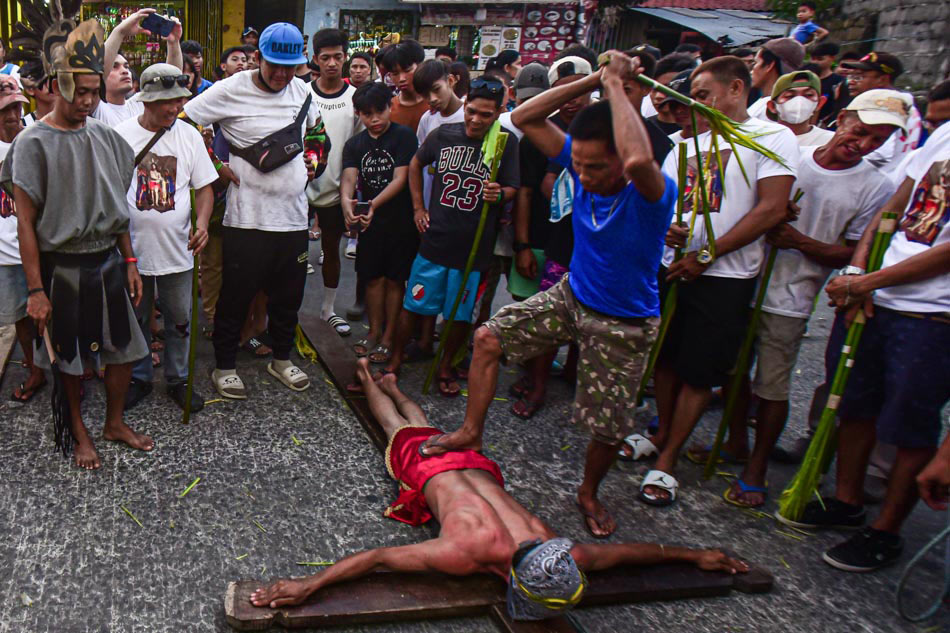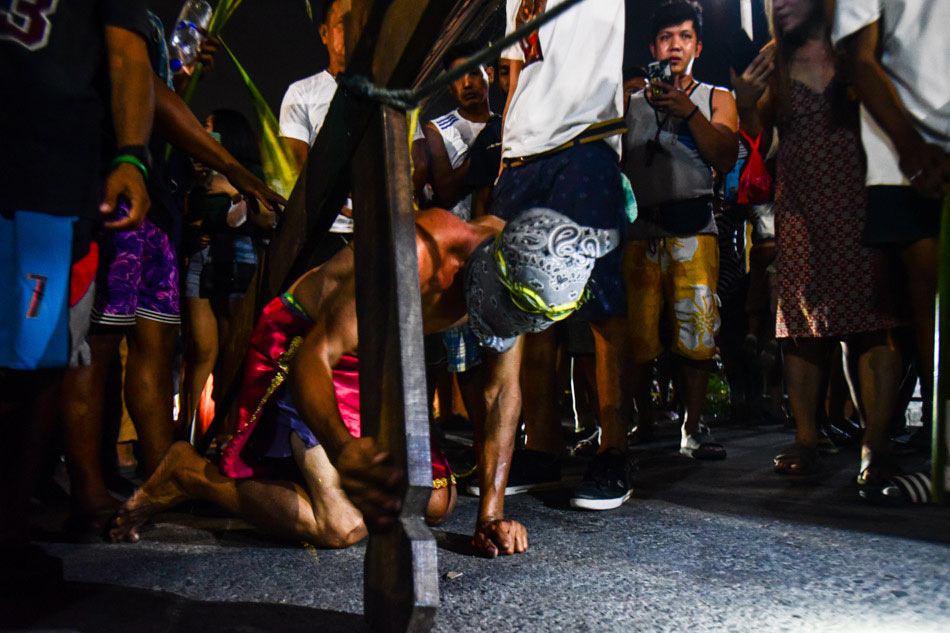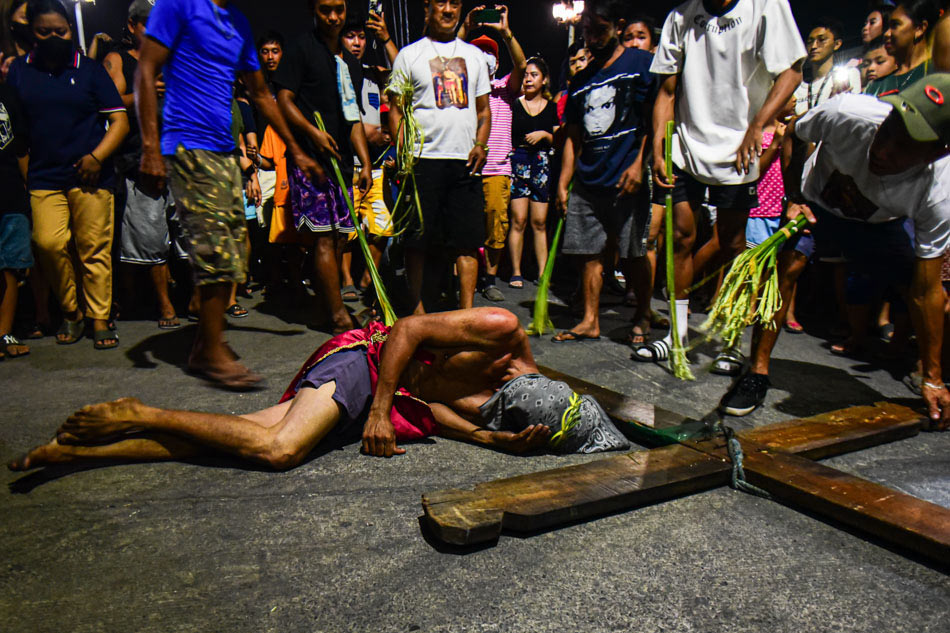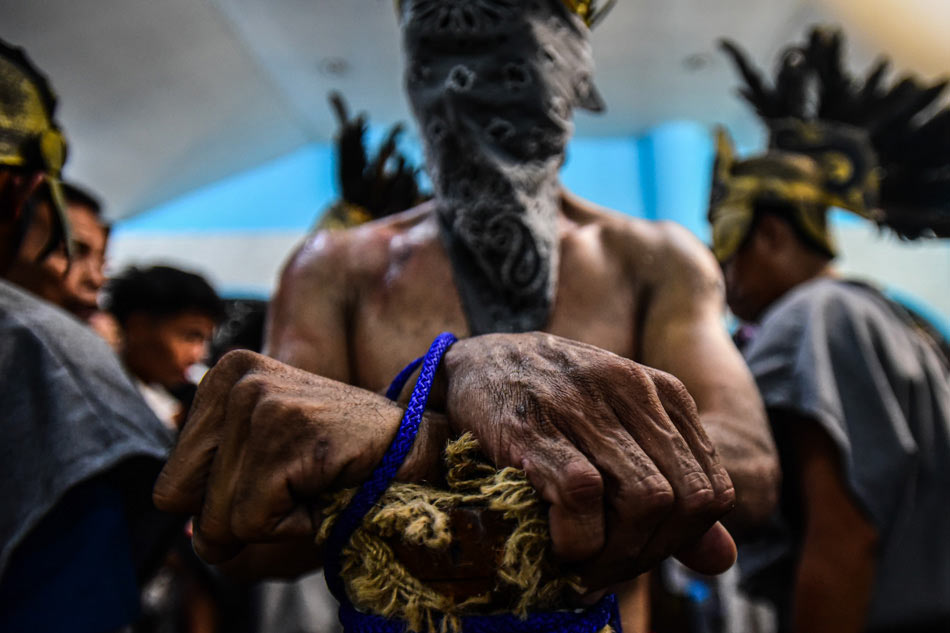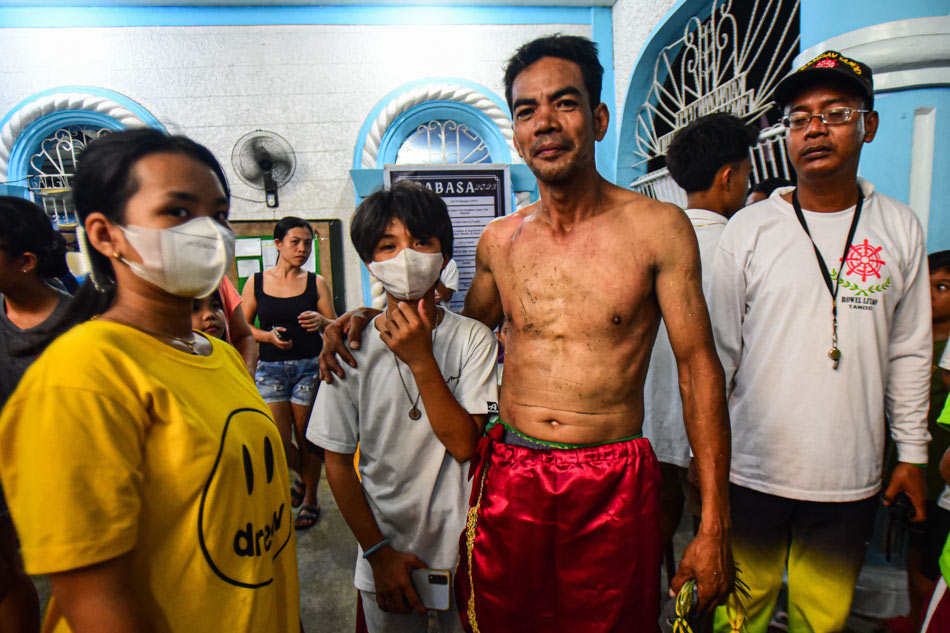Dakip, a Bulacan town's extreme show of faith
ADVERTISEMENT

Welcome, Kapamilya! We use cookies to improve your browsing experience. Continuing to use this site means you agree to our use of cookies. Tell me more!
Dakip, a Bulacan town's extreme show of faith
By Alec Corpuz and Maria Tan,
photos by Maria Tan,
ABS-CBN News
Published Apr 08, 2023 12:49 AM PHT
|
Updated Apr 08, 2023 08:30 PM PHT
Along the streets of Brgy. Tibig in Bulakan, Bulacan, 43-year old Noli Rizo was hit and battered by several men, but no one moved to offer a hand. Bloodied and beaten, Rizo soldiered on, paying no attention to those around him.
Along the streets of Brgy. Tibig in Bulakan, Bulacan, 43-year old Noli Rizo was hit and battered by several men, but no one moved to offer a hand. Bloodied and beaten, Rizo soldiered on, paying no attention to those around him.
This was no crime scene, just an extreme showing of faith and penance. Rizo, like many others in his town, participated in the traditional Dakip. Translated literally, "Dakip" means to be taken and is a play that reenacts how Jesus was taken and crucified.
This was no crime scene, just an extreme showing of faith and penance. Rizo, like many others in his town, participated in the traditional Dakip. Translated literally, "Dakip" means to be taken and is a play that reenacts how Jesus was taken and crucified.
Reason for joining
The penitents have their own reasons for joining the bloody tradition, one of the acts of penance the Catholic church frowns upon.
The penitents have their own reasons for joining the bloody tradition, one of the acts of penance the Catholic church frowns upon.
For Rizo, it started out as a religious vow and sacrifice for his father’s killer to be brought to justice. Two years after his father was killed during an argument over the tricycle queue in 2003, Rizo began joining the graphic practice. Some 12 years later, the perpetrator was caught.
For Rizo, it started out as a religious vow and sacrifice for his father’s killer to be brought to justice. Two years after his father was killed during an argument over the tricycle queue in 2003, Rizo began joining the graphic practice. Some 12 years later, the perpetrator was caught.
ADVERTISEMENT
For RIzo, this only cemented his belief. “Naniniwala ako na dahil sa pagganap ko nabigyan ko ng hustisya ang tatay ko after 14 years,” he says.
For RIzo, this only cemented his belief. “Naniniwala ako na dahil sa pagganap ko nabigyan ko ng hustisya ang tatay ko after 14 years,” he says.
Dakip tradition
The tradition of Dakip is unique to the barangay. Residents joining the practice walk some 15 kilometers bearing a cross, all the while being beaten by other characters of the play. The play takes between 4 to 5 hours, something that Rizo is intimately familiar with as he has been doing this for 18 years.
The tradition of Dakip is unique to the barangay. Residents joining the practice walk some 15 kilometers bearing a cross, all the while being beaten by other characters of the play. The play takes between 4 to 5 hours, something that Rizo is intimately familiar with as he has been doing this for 18 years.
Rizo has endured several hits and injuries yet he keeps coming back. He said, “Kahit minsan nabagok ang ulo ko patuloy ko itong ginagawa para matapos ang panata ko at pakiramdam ko napapalapit ako sa Diyos pag natapos ko.”
Rizo has endured several hits and injuries yet he keeps coming back. He said, “Kahit minsan nabagok ang ulo ko patuloy ko itong ginagawa para matapos ang panata ko at pakiramdam ko napapalapit ako sa Diyos pag natapos ko.”
As part of his preparation, he goes on a fast starting Holy Monday. According to him, this does not affect his work as a driver and someone who dries palay out in the fields.
As part of his preparation, he goes on a fast starting Holy Monday. According to him, this does not affect his work as a driver and someone who dries palay out in the fields.
Dakip begins
On the day of the Dakip, Rizo prepares his costume which includes a black piece of cloth that covers his face. “May takip ang mukha ko kasi hindi ako worthy, si Jesus lang puwedeng magpakita ng mukha,” he explained.
On the day of the Dakip, Rizo prepares his costume which includes a black piece of cloth that covers his face. “May takip ang mukha ko kasi hindi ako worthy, si Jesus lang puwedeng magpakita ng mukha,” he explained.
ADVERTISEMENT
Rizo’s faith runs so deep that he does not see the need to seek medical attention after, saying, “Hindi kailangan gamutin ang sugat ko after Pagdakip kasi may pananampalataya ako na kusa itong gagaling.”
Rizo’s faith runs so deep that he does not see the need to seek medical attention after, saying, “Hindi kailangan gamutin ang sugat ko after Pagdakip kasi may pananampalataya ako na kusa itong gagaling.”
Changes in the ritual
In all the years that RIzo has participated in Dakip, he has seen changes. He feels that some participants do not take it seriously anymore and they do it purely for entertainment.
In all the years that RIzo has participated in Dakip, he has seen changes. He feels that some participants do not take it seriously anymore and they do it purely for entertainment.
Mas maganda noong araw kasi noon may costumes , pero ngayon parang nilalaro na lang ng ibang gumganap, lalo na ng mga bata,” he said.
Mas maganda noong araw kasi noon may costumes , pero ngayon parang nilalaro na lang ng ibang gumganap, lalo na ng mga bata,” he said.
“Sana may gaganap pa rin para magpatuloy and tradisyon at naniniwala ako na napapabuti ang pag ganap sa gumaganap.”
“Sana may gaganap pa rin para magpatuloy and tradisyon at naniniwala ako na napapabuti ang pag ganap sa gumaganap.”
As for when his vow will end, Rizo said he does not see himself stopping anytime soon, or even at all. This, despite his family’s misgivings.
As for when his vow will end, Rizo said he does not see himself stopping anytime soon, or even at all. This, despite his family’s misgivings.
ADVERTISEMENT
“Masaya ako si ginagawa ko para magpatuloy at nakikita nilang paghihirap ni Kristo,” he said.
“Masaya ako si ginagawa ko para magpatuloy at nakikita nilang paghihirap ni Kristo,” he said.
ADVERTISEMENT
ADVERTISEMENT




